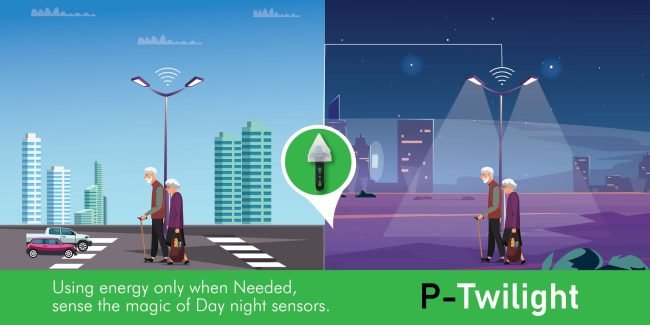Harnessing the Power of Day-Night Sensors: Efficient Usage of Appliances for a Sustainable Future of Motion sensor lights
Motion sensor lights are designed to detect movement and automatically switch on when someone enters their range. This technology not only provides convenience but also offers significant energy savings. By utilizing motion sensor lights outdoors, we can ensure that our lighting systems are only activated when needed, reducing unnecessary energy consumption and lowering electricity bills. This blog post delves into the significance of day-night sensors, their applications, benefits, and the potential they hold in revolutionizing our energy usage habits. Understanding Day-Night Sensors : Day-night sensors, also known as light sensors or photocells, are essential components in motion sensor lights. These sensors play a crucial role in automatically detecting changes in ambient light levels and triggering the activation of outdoor motion sensor lights. Applications and Benefits : The applications of day-night sensors are diverse and impactful. Let’s explore some key areas where these sensors can be employed: Outdoor Lighting: Day-night sensors enable outdoor lights to automatically switch on at dusk and turn off at dawn, eliminating the need for manual intervention. This ensures optimal illumination while conserving energy. Streetlights: Incorporating day-night sensors in streetlights allows them to brighten up as daylight fades and dim down as the sun rises. This adaptive lighting system not only enhances safety but also reduces energy consumption significantly. Indoor Lighting: By integrating day-night sensors with indoor lighting systems, we can ensure lights are switched on only when natural light levels are insufficient. This promotes energy efficiency and reduces electricity bills. Security Systems: Day-night sensors are integral to security systems, enabling them to trigger actions based on lighting conditions. For example, a sensor can activate surveillance cameras and motion sensors when it detects low light levels during the night. The benefits of using day-night sensors extend beyond energy savings: a) Cost Reduction: By optimizing energy usage, day-night sensors help reduce electricity costs over time. This is particularly significant for commercial buildings and public spaces with extensive lighting requirements. b) Environmental Impact: With reduced energy consumption, day-night sensors contribute to a lower carbon footprint, mitigating the adverse effects of climate change. c) Convenience and Safety: Automated lighting systems enhance convenience by eliminating the need for manual switching on and off. Additionally, well-lit streets and spaces bolster safety and security. Potential Future Applications: As technology advances, the potential applications of day-night sensors will continue to expand. Here are some exciting possibilities: Smart Homes: Integrating day-night sensors with smart home automation systems can optimize energy usage, automatically adjusting lighting, heating, and cooling based on natural light levels. Energy Management Systems: Day-night sensors can play a pivotal role in advanced energy management systems, enabling real-time monitoring and control of appliances based on light intensity and other environmental factors. Agriculture: Incorporating day-night sensors in greenhouse operations can regulate lighting for optimal plant growth, mimicking natural day-night cycles to maximize productivity. Conclusion : Day-night sensors have emerged as a valuable technology for efficient energy usage. By leveraging these sensors, we can significantly reduce energy wastage, cut down on electricity costs, and minimize our environmental impact. From outdoor lighting to security systems and beyond, their applications are vast and varied. Furthermore, as technology evolves, the potential for integrating day-night sensors in smart homes, energy management systems, and agriculture holds promise for a more sustainable future. Let us embrace this technology and work collectively towards building a greener and more energy-efficient world.

